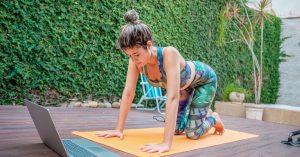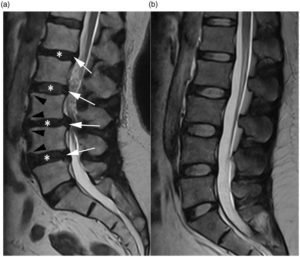Improve Adolescent Scoliosis with Select Yoga Poses
By John M. de Castro, Ph.D.
“Yoga can be very helpful for those with scoliosis, particularly given the combination of flexibility and core stabilization needed to perform yoga poses properly.” – Sara Lindberg
Scoliosis is a sidewise curvature of the spine that occurs in about 3% of adolescents. It develops most frequently in a growth spurt just prior to puberty. Most cases are mild and can be treated with a brace to stop the curve from increasing. But more serious cases can be disabling and may be treated with surgery.
There is a need for safe and effective treatments for scoliosis. Yoga practice combines mindfulness practice with exercise and has been shown to have a myriad of health benefits including the relief of chronic low-back pain. Many forms of yoga focus on the proper alignment of the spine, which could directly address the spinal curvature of scoliosis. But care must be taken as some yoga poses have the potential to exacerbate the spinal curvature.
In today’s Research News article “Isometric Yoga-Like Maneuvers Improve Adolescent Idiopathic Scoliosis-A Nonrandomized Control Trial.” (See summary below or view the full text of the study at: https://www.ncbi.nlm.nih.gov/pmc/articles/PMC7917413/ ) Fishman recruited adolescents less than 21 years of age with scoliosis and had them either receive treatment as usual, or yoga practice employing the side-plank pose for a lumbar curve, the half-moon and floating side plank poses for a thoracic curve, and or a side-plank, half-moon, and floating side plank poses for a Thoracolumbar curve. The yoga group was instructed to practice daily for 5 months and hold each pose for as long as they could. Instruction occurred either in person or over the internet. X-rays were taken of their spines before and after treatment.
They found that in the yoga group 49% of the lumbar and thoracolumbar curves and 29% of the thoracic curves had significant improvement while none of the control group did. In person and internet instruction were equally effective but compliance was better with in person instruction.
These results suggest that practicing a select set of yoga poses appears to be effective in treating scoliosis in adolescents. It is important that the right poses are used. Many yoga poses could well exacerbate the problem. In this study the side-plank, half-moon, and floating side plank poses were found to produce significant improvements.
So, improve adolescent scoliosis with select yoga poses
“But yoga and scoliosis don’t necessarily go hand in hand. While many poses are perfectly safe for scoliotic spines — and some even provide proven benefits — many others can make the curves worse. To safely perform yoga for scoliosis relief, it’s important to differentiate between asanas that can help and those that pose a risk.” – Clayton Stitzel
CMCS – Center for Mindfulness and Contemplative Studies
This and other Contemplative Studies posts are also available on Google+ https://plus.google.com/106784388191201299496/posts and on Twitter @MindfulResearch
Study Summary
Fishman L. M. (2021). Isometric Yoga-Like Maneuvers Improve Adolescent Idiopathic Scoliosis-A Nonrandomized Control Trial. Global advances in health and medicine, 10, 2164956120988259. https://doi.org/10.1177/2164956120988259
Abstract
Objective
Assess therapeutic value of specific yoga poses for thoracic and lumbar adolescent idiopathic scoliosis (AIS) taught in office or Internet.
Study Design
Nonrandomized control trial: Fifty-six adolescents (mean age 14.0 years; mean Risser 3.0) were recruited from our clinic; 41 did the side-plank, the half-moon and elevated side plank poses as appropriate (treatment group) and 15 did not (controls). Thirty curves were treated in office, 30 via Internet. Curve change was evaluated by blinded serial Cobb angles, and analyzed using Mann-Whitney U, paired t-tests and χ2.
Results
Mean lumbar and thoracolumbar Cobb angle change was −9.2 (95% CI = −11.8, −6.6) in the treatment group and 5.4 (95% CI = 1.7, 9.0) in controls. Both treatment group improvement and deterioration in controls were significant (treatment group: paired t-test t = −7.1, df = 40, p = .000; controls: t = 3.2, df = 12, p = .008). Mean thoracic Cobb angle change was −7.1 (95% CI = −13.1, −1.2) in the treatment group and 9.3 (95% CI = 4.5, 14.6) in controls. Both changes were significant (paired t-test t = −3.3, df = 21, p = .022 for treatment group; t = 4.5, df = 5, p = .006 for controls). Nine Internet patients were non-compliant vs. 6 office patients. Office patients improved 1.6 degrees/month or 5.5%/month; Internet patients improved .72 degrees/month or 3.3%/month.
Conclusion
These yoga poses show promise for reversing adolescent idiopathic scoliosis. Telemedicine had greater non-compliance and lower efficacy but still produced patient improvement.
https://www.ncbi.nlm.nih.gov/pmc/articles/PMC7917413/



